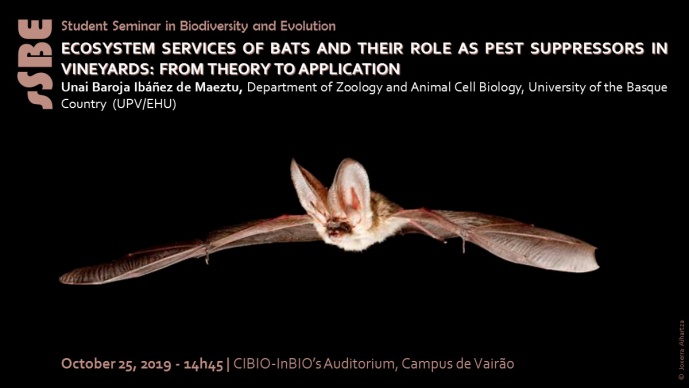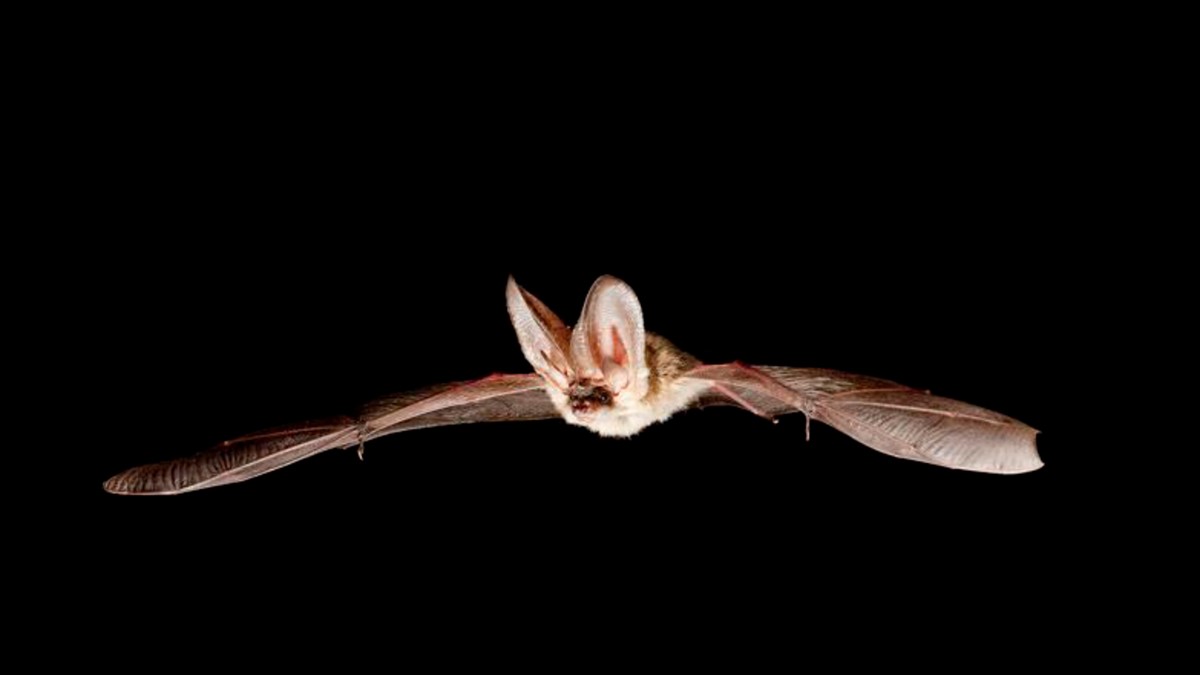ECOSYSTEM SERVICES OF BATS AND THEIR ROLE AS PEST SUPPRESSORS IN VINEYARDS: FROM THEORY TO APPLICATION

STUDENT SEMINAR IN BIODIVERSITY AND EVOLUTION

Herbivorous arthropods cause immense damage to crop production annually. Consumption of these pests by insectivorous animals is of significant importance to counteract their adverse effects. Insectivorous bats are considered amongst the most voracious predators of arthropods, some of which are known crop pests. In vineyard-dominated Mediterranean agroecosystems, several crops are damaged by the attack of insect pests. In this study we aimed 1) to explore the diet and pest consumption of the lesser horseshoe bat Rhinolophus hipposideros and 2) analyse whether the composition of pest species in its diet changes throughout the season. We employed a dual-primer DNA metabarcoding analysis of DNA extracted from faeces collected in three bat colonies of a wine region in Southwestern Europe during the whole active period of most pest species. Overall, 395 arthropod prey species belonging to 11 orders were detected; lepidopterans and dipterans were the most diverse orders in terms of species. Altogether, 55 pest species were identified, 25 of which are known to cause significant agricultural damage and 8 are regarded as pests affecting grapevines. The composition of pest species in faeces changed significantly with the season, thus suggesting several periods should be sampled to assess the pest consumption by bats. As a whole, the results imply that R. hipposideros acts as a suppressor of a wide array of agricultural pests in Mediterranean agroecosystems. Therefore, management measures favouring the growth of R. hipposideros populations should be considered.
Unai Baroja currently works at the University of The Basque Country as a PhD student where he is trying to decipher the role of insectivorous bats as suppressors of agricultural pests. For that, he is trying to analyse the seasonal diet of different bat species by means of DNA metabarcoding as well as their activity patterns in parallel with the most important vineyard and pine plantations pests' phenology in the Iberian Peninsula.
[Host: Hugo Rebelo, Bat Ecology]
Image credits: Joxerra Aihartza